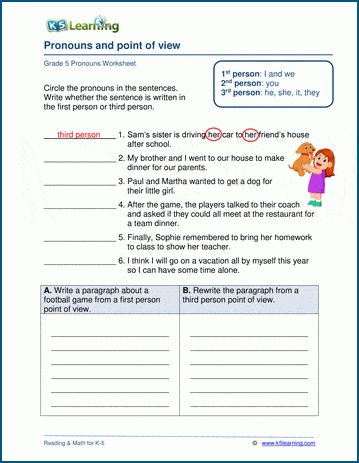In grade 5, students work on narrative voices. It can be tricky to work out from whose point of view a story is written. Is the story written in first person, second person or third person?
To work this out, students need to find the pronouns in the sentence. A pronoun is a word that refers to either the person talking (I or you) or someone being talked about (she, he, it, them, this).
We’ve created a series of worksheets for learning to identify the points of view. We’ll use sentences from these worksheets to demonstrate how to identify different points of view.
First person
In the first person, the speaker is referring to himself or herself: ‘I”.
Here’s an example sentence using first person:
![]()
Looking for the pronouns, you’ll see it says: “I think”, “I will”, “myself”. These are all first person. So the answer is first person.
![]()
Second person
Writing that uses you, your and yours is called second person. Students won’t come across this type of writing in many stories, but second person does appear in instructions, advertising and speeches. For example, in a written recipe.
To make hot chocolate, you need to heat the milk and add cocoa powder to the hot milk.
In this sentence, you’ll see it says: “you need”. This is the second person point of view.
Third person
In stories where the subject is being spoken about is the third person point of view. In these texts, students need to look out for the pronouns: she, he, it, them, this. For example:
![]()
In this sentence, you’ll see: “bring her”, “show her”. This is the third person point of view.
![]()


